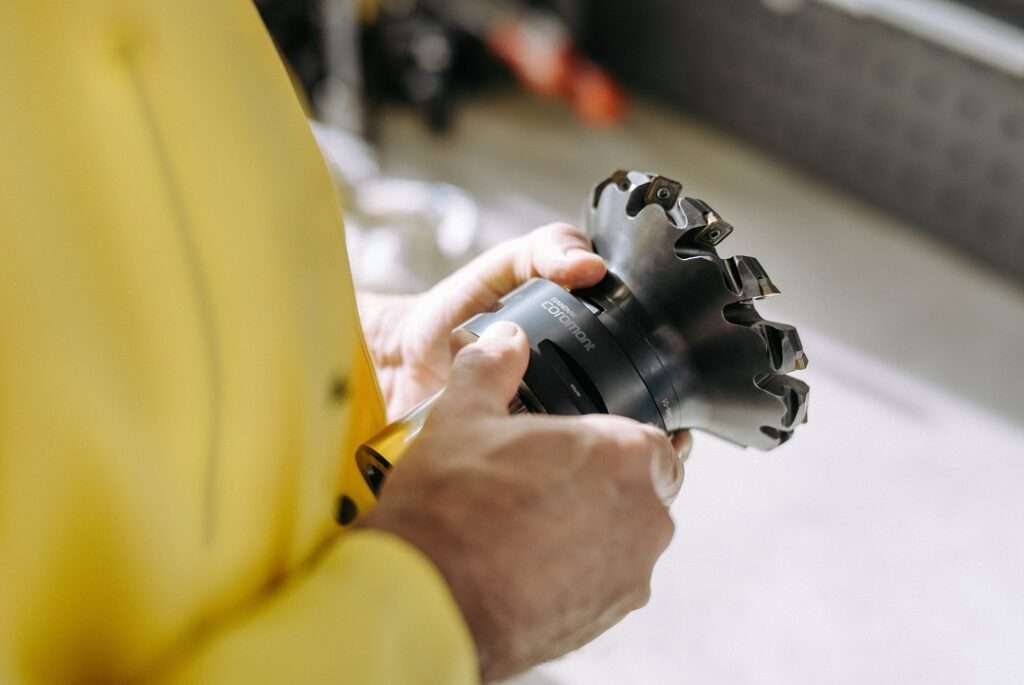- India witnessed a 700% jump in its Defence export orders over the last 5 years but depends heavily on imported products and technologies
- iDEX innovation ecosystem for Defence and Aerospace or SRIJAN DEFENCE portal for support to Start-ups/ MSMEs are major steps
- Participation from Private Manufacturers will not only bring a level playing field but can bring much required new innovations
The defence is a strategic sector and India’s defence sector is one of the largest in the world. It has the world’s largest military force with over 14 lakh active military personnel, the third-largest defence budget in the world, and the second-largest import volume of defence equipment. Recently Machine Maker Friday Debate, discussed about this strategic topic, and industry leaders came vocal about the importance of involving private sector in Defence Manufacturing, one of the main reason for our foreign dependency.
Indian space and nuclear programs are best in the world, but the same time we lack behind in Defence. This is because of the non-involvement of private players, where new innovations and research in the country lost over almost sixty years after Independence, the thoughts aired by Commodore Mukesh Bhargava, Member of Board L&T Defence and Vice President at L&T, as well as Raaj Nair, Vice President – International Business & Govt Accounts, SSS Defence.
However, the defence has always been kept away from the private sector. The private sector was not allowed to collaborate with the defence industry and India is not self-reliant in defence, most of our ammunitions are imported. The private sector was only allowed to collaborate with the defence sector in May 2001, till then the government was importing defence products as the Defence Research and Development Organisation (DRDO) was not able to design products. In 2006, a Research and Development section in Ordnance Factory was created, formally.
Defence Budget & Committed Liabilities
The defence budget has 1.3 lakh crore allotted for capital procurement, 85% of the budget is allotted to committed liabilities, and committed liabilities are the schemes or programs that are ongoing. Only 15% of the budget goes to fresh acquisitions, out of this fresh acquisition a large amount goes to government factories and entities and a large number of projects are being procured from abroad, the reason being an urgent requirement or time paucity. Under the current regime, the localisation of defence is given priority after almost 70 years of the private sector being kept away from the defence sector. In 2001, Foreign Direct Investment (FDI) was also allowed up to 26%, subject to industrial license under the Industries (Development & Regulation) Act, 1951, and manufacturing of small arms and ammunition under the Arms Act, 1959.
The data produced by 80 companies involved in the Aerospace and Defence sector shows that there have been FDI inflows of over Rs. 3454 crores till June 2020, and Rs. 2133 crores out of this have come in only after financial year (FY) 2014-15. Important reforms were brought in to encourage FDI in defence to supplement the domestic investment. Indian companies have reaped the benefits of the reforms and have access to state-of-art- technologies and managerial practices of the world. As a result, there is an increase in employment generation and the sector is growing at a better speed.
FDI limit in Defence Manufacturing and Production
There have been reforms and other measures taken by the government to modernize the defence sector. In May 2020 the FDI limit in defence manufacturing and production was increased to 74% from 49% under Automatic Route. In addition to this, the FDI in defence was suggested to be raised to 74% through the automatic route and up to 100% through the government route for companies looking for the new defence industrial license.
The current process for government approval for the present FDI approval holders, a shareholding pattern that is up to 49%, present defense licensees have been propositioned to be changed with an obligatory declaration for the same within 30 days of the change of shareholding pattern or equity. Any proposal for increasing the FDI beyond 49% could be done with this Government approval.
Import Embargo: 101 Negative List of Defence Weapons/ Platforms
In August 2020, defence ministry declared 101 items which will be banned for import, this ‘Negative list’ contains some high-tech weapon systems as well as simple parts. It has banned corvettes, artillery guns, assault rifles, transport aircraft, etc. This will provide opportunities to defence manufacturing industry to manufacture the items in the negative list and strive towards self-reliance in defence. You can check the complete list by clicking here.
The entire procedure for the export license has been made online, it doesn’t take more than a month to get an export license. Additionally, the number of defence items that require a license is very small now, almost 70% of items from the list of defence items list were removed. In 2020, a dedicated policy for defence export was introduced for the very first time.
Taking cue from that evocation, the Ministry of Defence has prepared a list of 101 items for which there would be an embargo on the import beyond the timeline indicated against them. This is a big step towards self-reliance in defence. #AtmanirbharBharat
— Rajnath Singh (@rajnathsingh) August 9, 2020
Defence Procurement Procedure & Buy IDDM
A new type of capital procurement has been introduced, it is called “Buy {Indian-IDDM (Indigenously Designed, Developed and Manufactured)}” to Defence Procurement Procedure 2016 (DPP). This was introduced to encourage the development and design of defence equipment. It has been prioritized. The “Make” process of capital procurement has been made simpler. Additionally, 90% of the development cost can be funded by the Government of India under the Make-I category. MSMEs have certain reservations under the “Make” process.
A separate process for the Make-II category is introduced, it involves provisions that are industry-friendly like nominal documentation, easing of eligibility criterion, consideration of proposals recommended by an individual, or an industry. Under this, 49 projects related to defence, valuing up to Rs. 30,000 crores have been conferred with “Approval in Principle”.
Innovations for Defence Excellence (iDEX)
Innovations for Defence Excellence (iDEX) is an innovation ecosystem for the defence that was launched in 2018. It aimed at creating an ecosystem that will promote technology development and innovation in Defence and also Aerospace. This will be done by getting various MSMEs (Micro, Small and Medium Enterprise), R&D (Research and Development) institutes, Academia, Start-ups, and Individual Innovators on board and providing them with funding and any other supporter they need to do research and development which can later be adopted by the defence sector. A participant can avail of funding up to Rs. 1.5 crore to develop a prototype.
SRIJAN DEFENCE is a portal that was launched by the Ministry of Defence, it is exclusively dedicated to providing support to Start-ups/MSMEs and the industry in general for import substitution
This is not an exhaustive list of measures, FDI is an ongoing process, it keeps having amendments, and a lot of other measures are taken to strengthen the defence sector. Defence manufacturers feel that localization of defence is a new and upcoming market and it is starting to gain traction, it will be a fully developed market in about 5-10 years. Self-reliance in defence is not a far-fetched dream, it is very much possible to achieve, the future is hopeful and bright.







